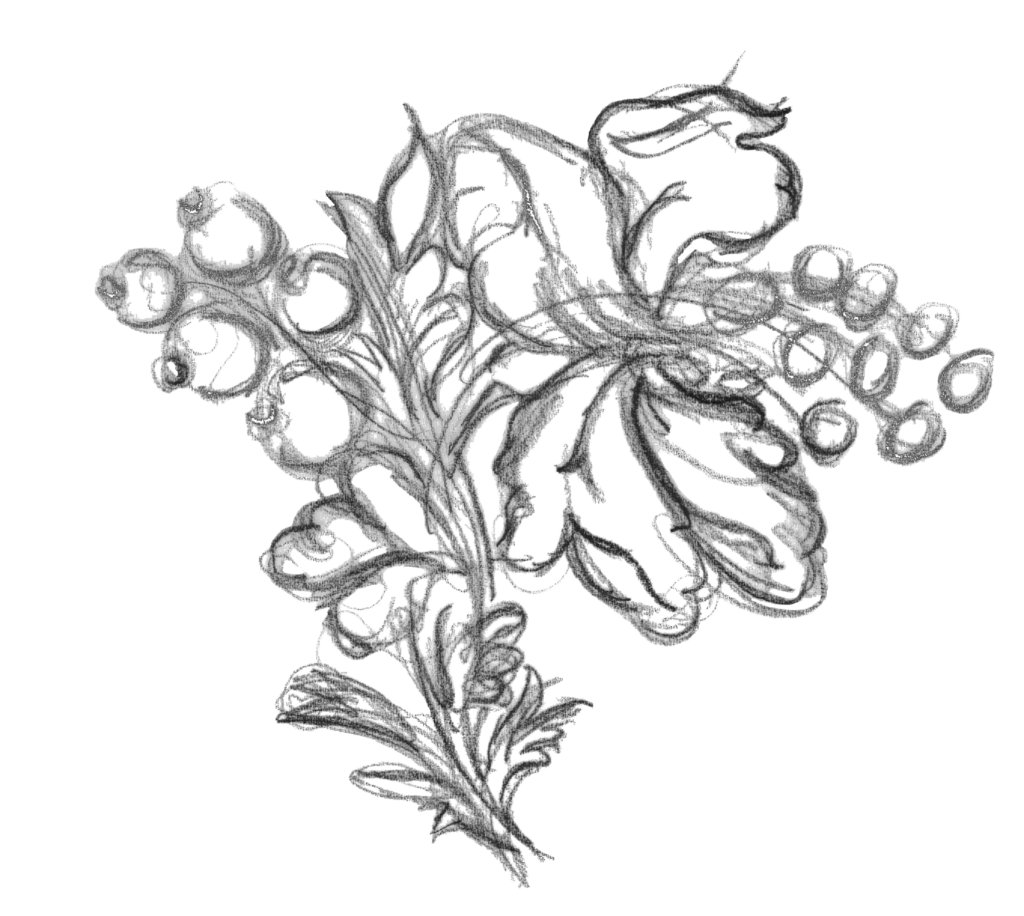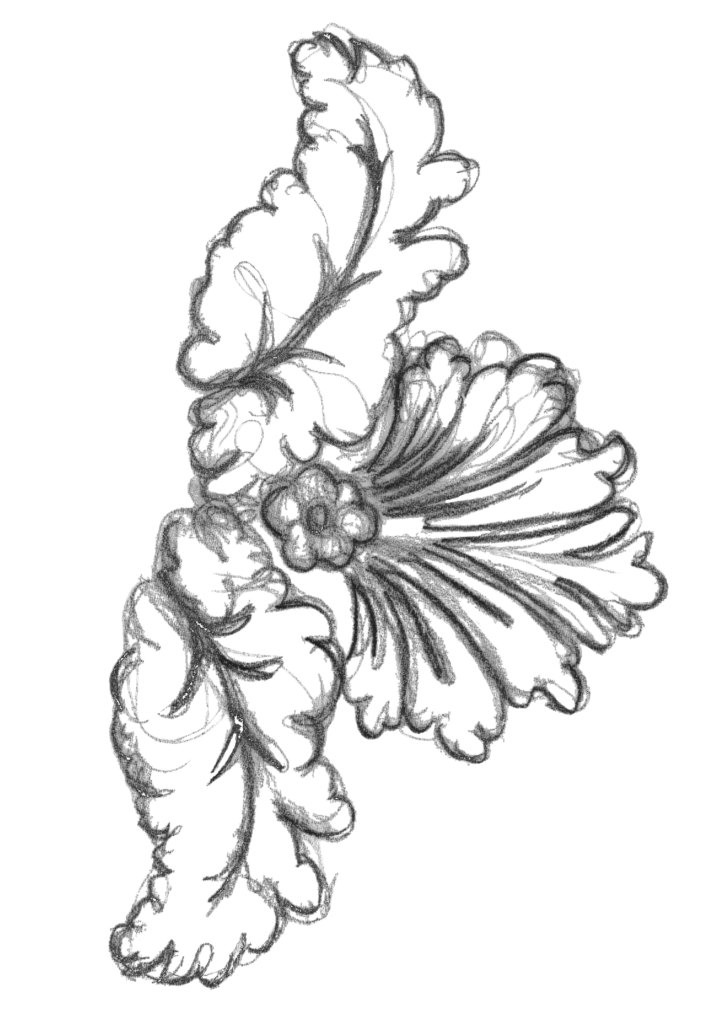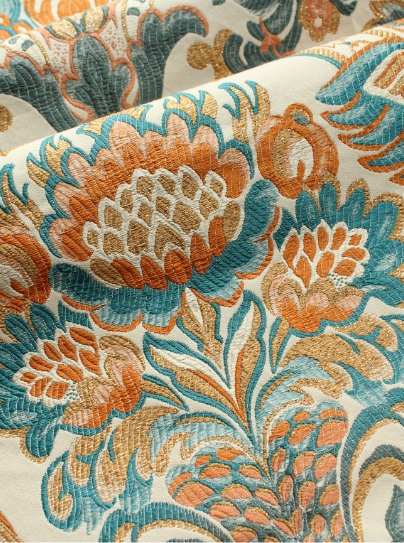19th Century Textiles are an important period of historic designs Humphries Weaving hold within the archive.
These traditional textiles are used to inspire our work in historic restoration, and the authentic designs are custom woven to order in Sudbury, Suffolk. These fabrics have been woven for Historic Royal Palaces, the National Trust and Private Individuals alike. This article explores some of the key design styles, events, figures and colours from the 19th century, (1800-1899.)
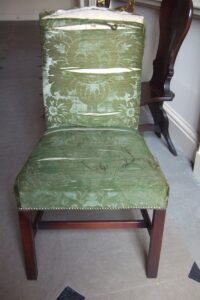
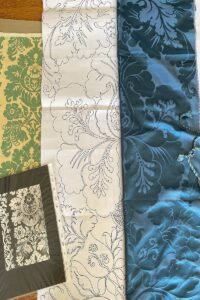
Humphries Weaving are frequently asked to help restore historic textiles. These might be surviving fragments of cloth adorning delicate wall coverings, or worn out and torn upholstery fabric. For the first step of our textiles research and consultancy service we analyse the origional fabric composition, weave constructions and colour. We then look at the design, and redraw this by hand in our studio. Should details be unclear or elements of the design missing, we might also refer to our archive of historic designs to help us fill in the gaps. All of these elements play an important role in recreating the very best historically authentic 19th Century textiles.
A key piece of research which can help guide our design development is the date of the historic house or textile.
Developments in technology dictated the complexity of designs, and in 1804 at the beginning of the 19th Century Joseph-Marie Jacquard invented the Jacquard loom. This revolutionised how patterned cloth could be woven, and more highly decorative designs could be created full of intricate detail. This led to long design repeats and isometric layouts to emphasise the capabilities in Jacquard technology. Isometric layouts contain designs which do not mirror in the centre, as seen with our 19th century textiles below:
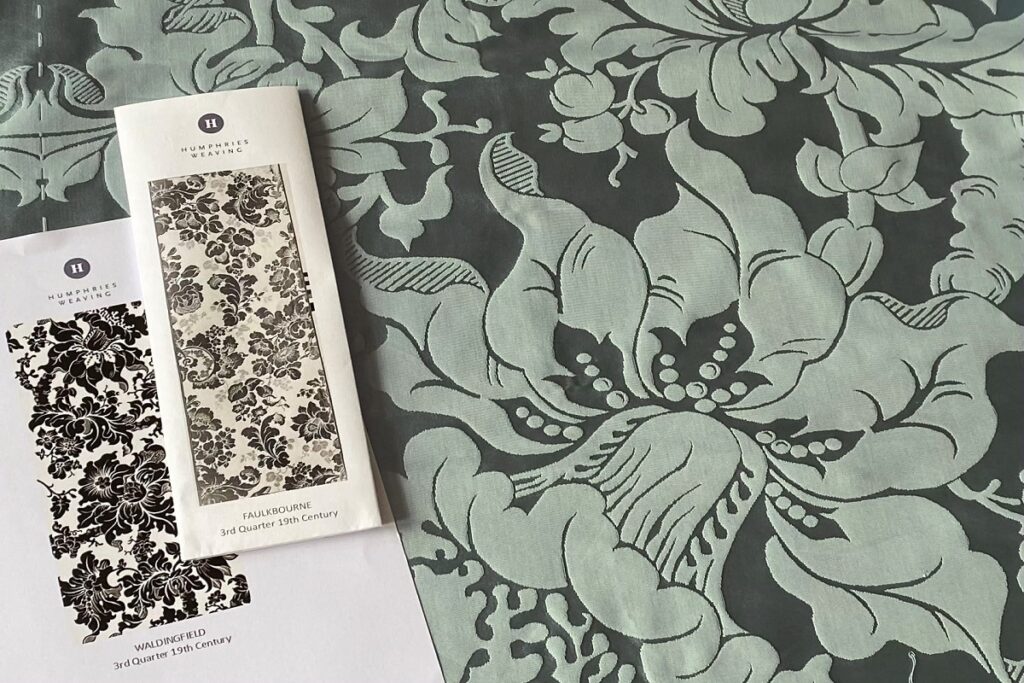
Another key event impacting 19th century textiles was The Great Exhibition in 1851. Held in London, this huge exhibition celebrated British design and manufacturing, and was known as the “Great Exhibition of the Works of Industry of All Nations.” An estimated 6 million people attended the event over a period of 5 months, and were inspired by a wealth of designs from across the globe. The Great Exhibition had a known on impact on the current trends and styles of designs seen during this time, and influences from abroad crept into British designs.
Throughout 19th century textiles there are a number of key styles. Explore 3 of the most frequently referenced below.
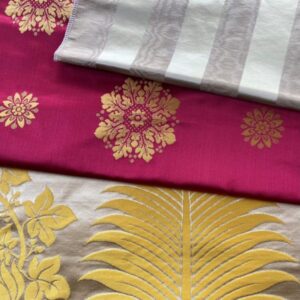
The Regency Period
This period dated from 1811 to 1820’s. Key designers included Thomas Hope, 1769 – 1831, who had a major influence on taste in the Regency period. He was born in Holland, but fled to England after the French invasion. After traveling on the Grand Tour, Hope began to collect Classical art, and he believed that an interior should be stylistically harmonious. He put this idea into practice in the innovative designs for his own London home.
Popular design styles of the period included figured stripes, strong graphic motifs and sharp pointed leaves. A lot of designs also featured a geranium & gold colour pallet, as seen in one of the most famous Regency Schemes in the Royal Brighton Pavillion.
Click here to read more about the custom silk tissue we helped to restore for this impressive interior.
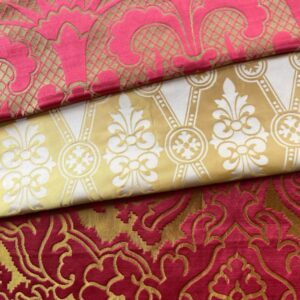
Gothic Revival
This period flourished between 1830 to around 1900. Key designers included Augustus W. Pugin, 1812- 1852, who urged architects and designers to work from the fundamental principels of Medival Art and design. Pugin was known for using these older designs and rounding off courners so they were not as elaborate. Much of his work can be found at Catholic Churches and the Palace of Westminster, containing sumptuous silks and complex figured brocatelle’s. A brocatelle is a three dimensional fabric originally designed as a more cost effective way to imitate the appearance of figured velvet.
Other key elements of Gothic Revival designs included ecclesiastical and heraldic motifs, bold lines and strong trellis details.
Arts & Crafts
This period dates from the 1860’s to the 1920’s. Key designers included Owen Jones, 1809 – 1874, and William Morris, 1834 – 1896, of whome much of his design aesthetic is still seen in present interior schemes. Morris was a headline figure of the Arts & Crafts movement, believing that you should “have nothing in your houses that you do not know to be useful or believe to be beautiful.” He produced a wide range of decorative objects for the home including fabrics, furniture and wallpaper, showcasing designs influenced by nature. Multi coloured florals, birds and animals in simpler, layered designs contrasted the grandness of the brocatelles seen in the Gothic Revival & Regency period. These fabrics also tended to be woven in more textured matt yarns, such as wool and cotton.
Below is an image of an origional William Morris fabric is held within our archive. On the right is a selection of Arts & Crafts fabrics within our collection.
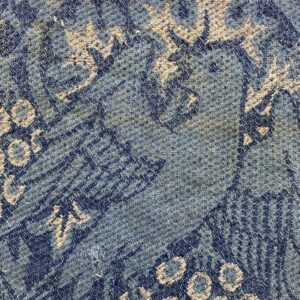
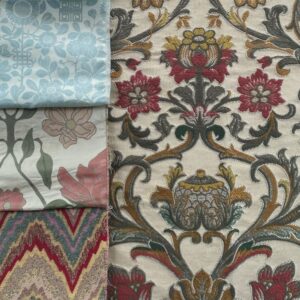
When creating custom 19th century textiles for a project in which all evidence of the origional design be lost in history, clients are also welcome to use our archive to help recreate historically accurate fabrics. An existing design can be chosen, and combined with a colour found within our archive. This colour can be dated to period, or our clients can chose their own unique colour palette. The fabric specification is then custom woven to order.
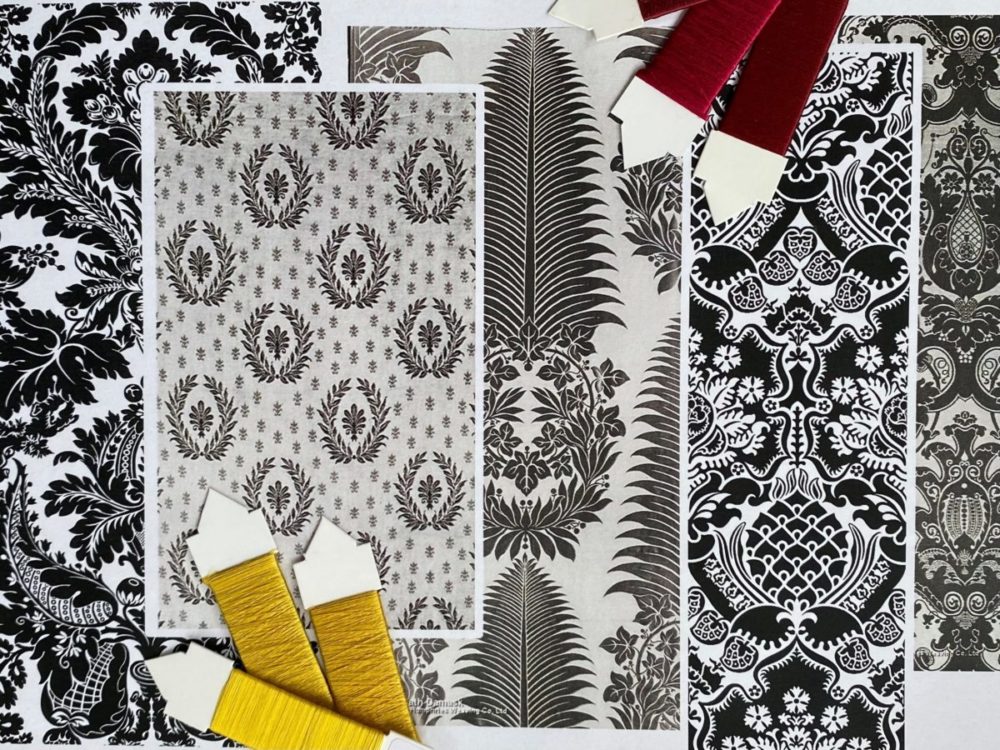
Interested in exploring more traditional textiles? Read some articles below:
17th Century Textiles
18th Century Textiles
[/spb_text_block] [/spb_row]
